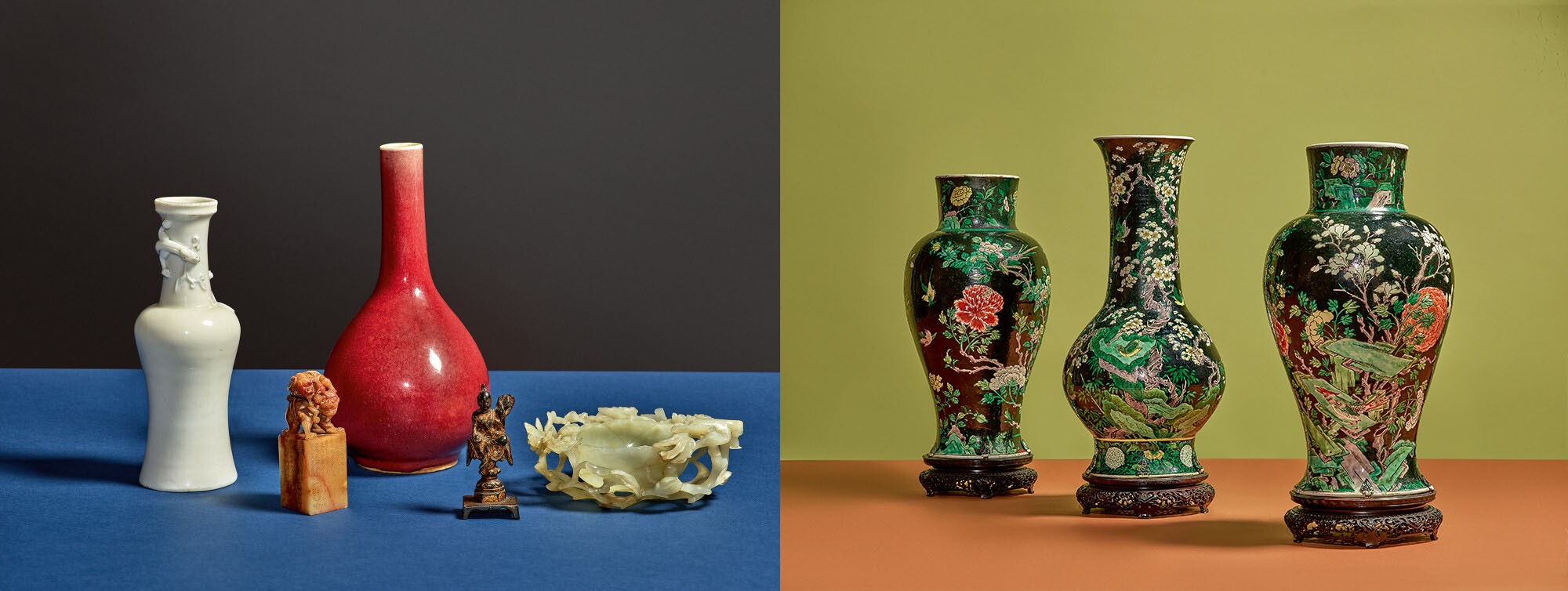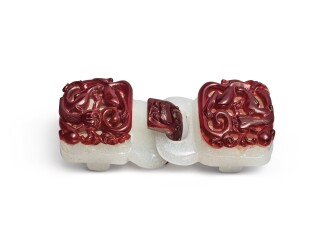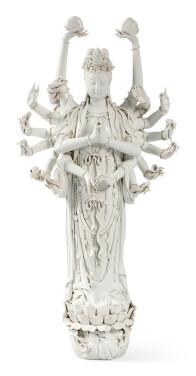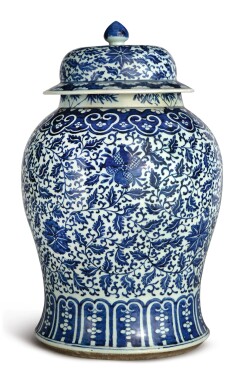T he Hundred Antiques: Fine & Decorative Asian Art features over 170 Chinese, Japanese, Korean, Indian, Himalayan and Southeast Asian works of art and paintings. Spanning centuries, highlights include a group of famille-noire porcelains formerly in the collection of John D. Rockefeller, Jr. (1874-1960) and deaccessioned by a Southern institution, Qing dynasty glass from a California private collection, ‘hongmu’ furniture from the J.T. Tai & Co. Foundation, a rare Tang dynasty gilt-bronze Buddhist figure, and a Qing dynasty 19th century gilt-copper stupa.

Sale Highlights
Exhibition On View in New York
Following the guidelines for the Phase Four reopening of Manhattan, we are able to accommodate clients in our building by appointment only. To schedule an appointment to view the Asia Week Exhibitions please contact appointmentsNY@sothebys.com or +1 212 606 7171. You can read more about our safety requirements here.


As scholars were creators and aficionados of artworks, entire categories of objects were produced to satisfy their needs and appeal to their sensibilities. The forms of the objects are often utilitarian, and their aesthetic trends toward refined simplicity, with an emphasis on the qualities naturally expressed by a material, and often inspired by the illustrious dynasties of the past. The present sale includes numerous works of art made for scholars’ use and appreciation, including a pingtouan painting table, monochrome ceramics, carved stone seals, and brushpots and waterpots of various forms.

Carefully selected over a fifteen-year period, the glasswares comprising this concise collection demonstrate the range of tonality, translucency, and technical mastery that glass makers of the Qing dynasty achieved. Starting in the Kangxi period (1662-1722), Chinese glassmaking enjoyed a renaissance as craftsmen at the Imperial workshops shared knowledge and developed new techniques alongside European missionaries at the Court. The advent of overlay glass, seen in four of the present lots, is one of the most successful innovations from this fruitful exchange. The present collection is also strong in monochrome vessels, whose shapes and hues were inspired by contemporaneous porcelains, but whose material properties allowed light to illuminate their surfaces as if they were carved from jade or precious stones. The imitation of jade’s luminosity was deliberate, and glassmakers further borrowed from indigenous lapidary traditions when carving glass pieces with faceted sides or high-relief designs, as seen in several of the jars, bowls, vases, and belt hooks offered here.

J.T. Tai was one of the foremost dealers in Chinese art in the second half of the 20th century, and his store on Madison Avenue in New York was a magnet for aspiring and established collectors of fine Chinese ceramics and works of art. Under his guidance some of the most important collections of Chinese art were formed, most notably those of Avery Brundage and Arthur M. Sackler, who would go on to assemble two of America’s greatest Asian art collections. For decades, these hardwood furniture pieces were used in Tai's office to receive Tai and his guests.

Review More Furniture Lots in the Sale
Lot 1040 – Lot 1045
Stupa: Eternity and Enlightenment
The form of the stupa is considered to be a symbol of the Buddha’s body, speech and mind. Originally built as large funerary mounds to honor and hold the relics of the Buddha after his death, the form was promulgated largely by Ashoka during the 3rd century BCE during the initial building program at Sanchi in Madhya Pradesh. Of the eight great stupa designs which commemorate the life events of the Buddha Shakyamuni, this particular stupa design is referred to as the Reconciliation Stupa, and is meant to signify the unity of the Buddhist community after a period of great divisiveness.

Born in New York City, Dr. Richard H. Cord (1930-2006) served in the United States Navy for years, spending time in Korea where he became attracted to the beauty of Asian art. Later in life Cord became a prominent physician in Birmingham, Alabama and was a founding member of the Birmingham Asian Art Society, a support group for the Birmingham Museum of Art. Formed in 1975, the society was pivotal in the growth and development of the museum’s Asian art collection. Founding members of the Birmingham Asian Art Society collected under the advice of Dr. Sherman E. Lee (1918-2008), Asian art historian and Director of the Cleveland Museum of Art.

Many late Qing dynasty works of art can be characterized by an embrace of surface ornament, exuberant color, and auspicious symbolism, building upon tastes established in the earlier Qianlong period. This is most evident in the art and dress of the later 19th century imperial court and its nobility, seen for example through meticulously embroidered silk ‘dragon’ robes, vibrantly enameled porcelains decorated with emblems of longevity, wealth, and prosperity, or through highly furnished interiors adorned with a mix of paintings, porcelain, jade, wood, metal, and precious objects.



































































